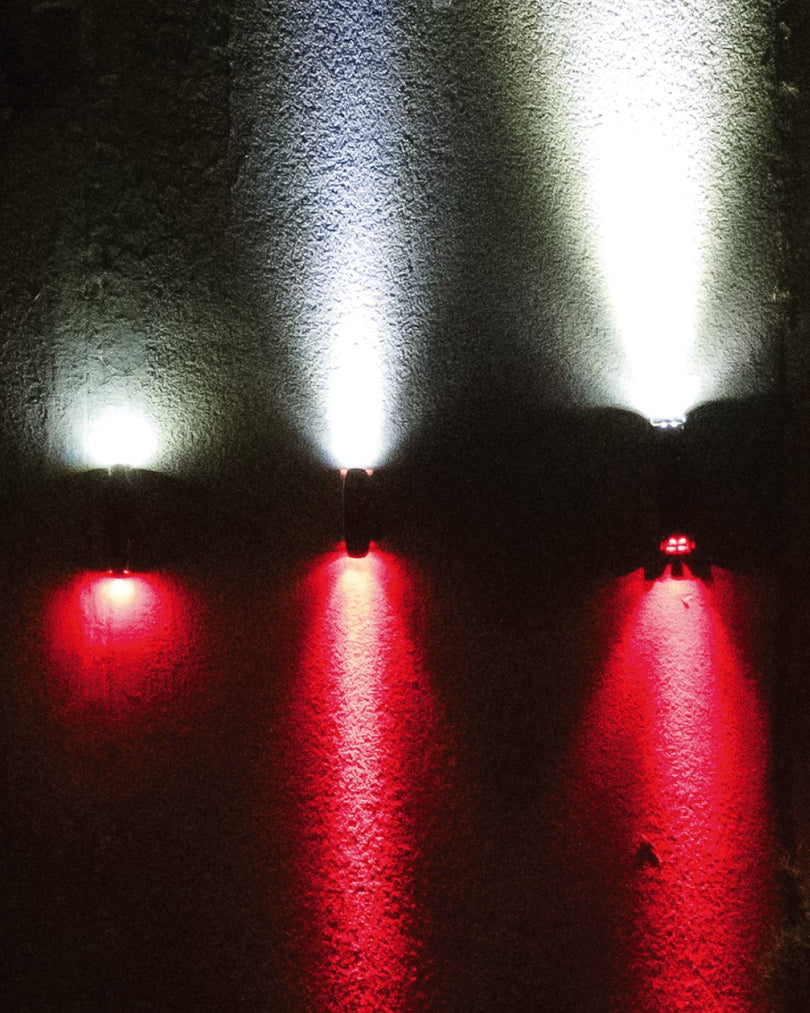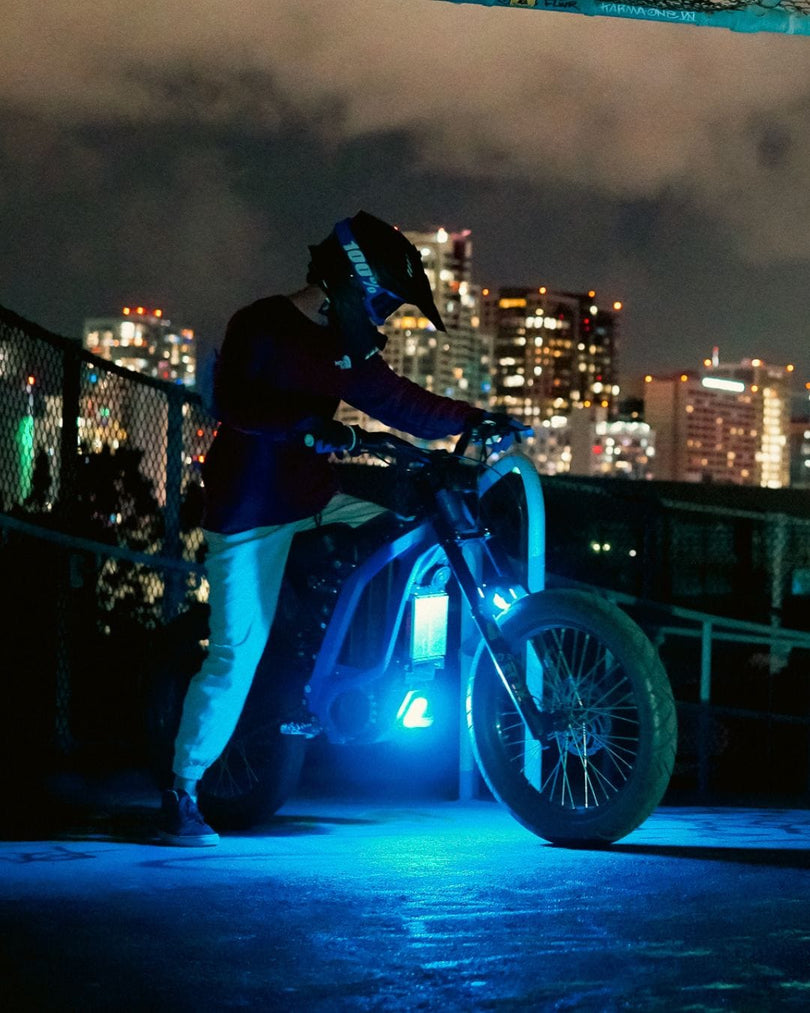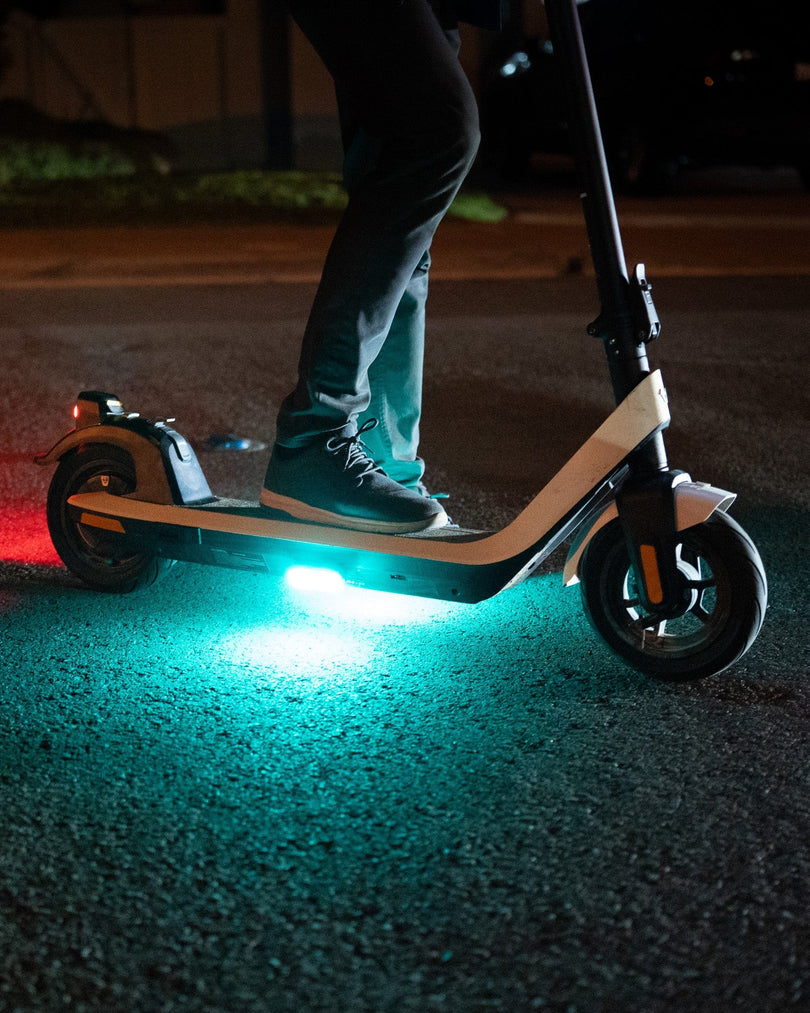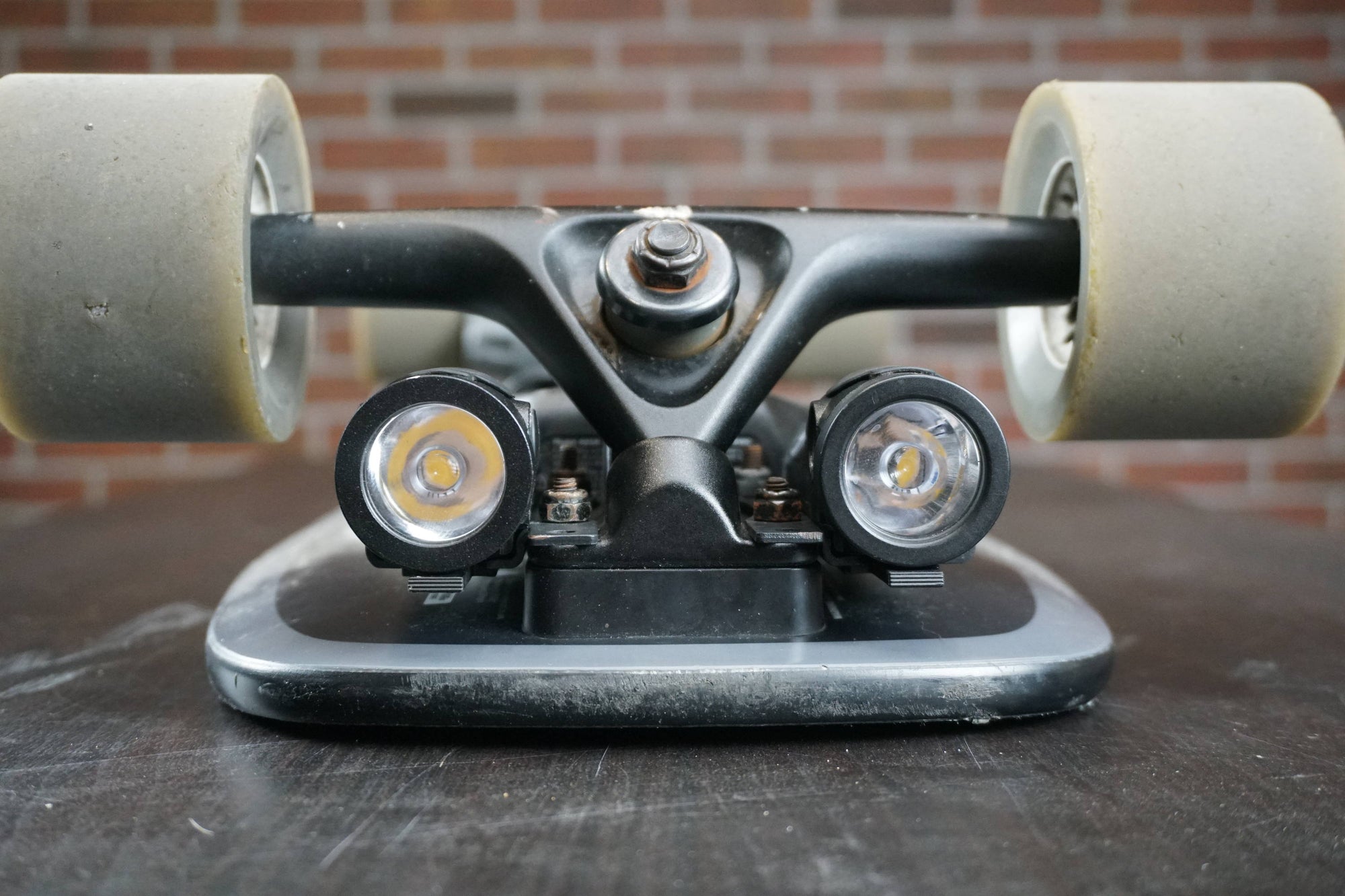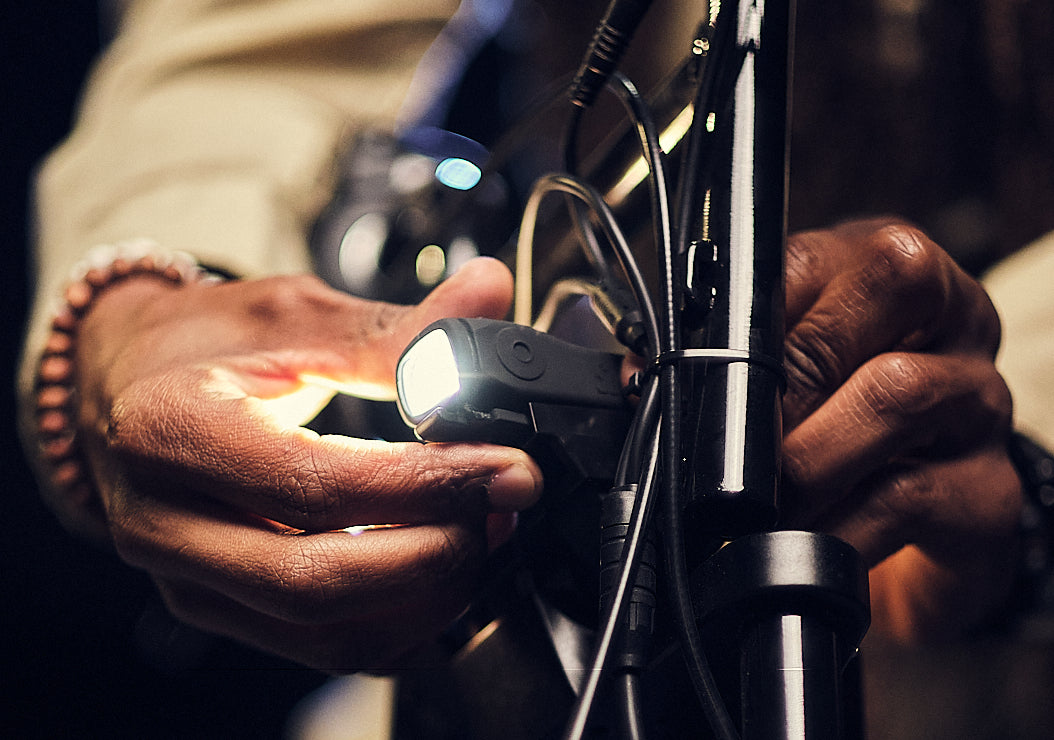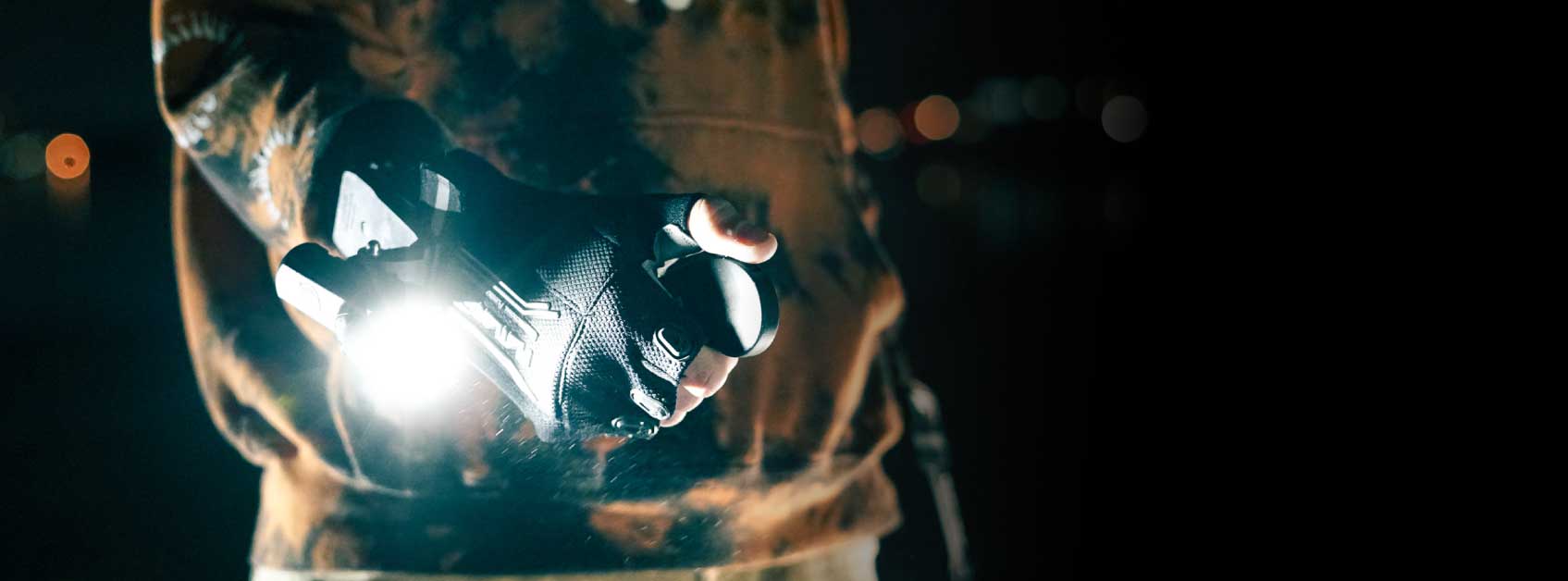Introduction
So you’ve decided to dive into the world of electric skateboarding. Congratulations! A life of shredding up hills and carving effortlessly through city streets awaits you. There’s just one problem; which electric skateboard is right for you? This comprehensive guide can help you find the perfect match.
Step 1: Choosing the right deck
Before you start doing any research, you need to know what kind of deck you want to be riding on. The "deck" refers to the board without the trucks, wheels, battery or motors (only what you stand on). The two most important aspects of selecting the right deck that you should focus on are:
- Deck shape options (Short Board or Longboard)
- Deck material options (Wood or Carbon Fiber)
Longboards
Longboard decks are the most common of the two shapes used for electric skateboards. As the name suggests, longboards are longer than cruisers and are normally 35 inches or longer (89 centimeters). Compared to short boards, longboards provide the rider with a more comfortable and stable experience making them the best option for beginner's. If you’re looking for a more comfortable experience, look for a bamboo-fiberglass longboard with an ample amount of flex to help absorb vibrations. If you’re looking for stability at high speeds, look for a Canadian maple or carbon fiber longboard with little to no flex at all.
Short boards aka "Cruisers"
Short board decks are normally 25-35 inches long (64-89 centimeters). They are known for being compact and maneuverable in tight areas. Their smaller size makes them ideal for taking on public transit, tossing in the trunk of your car, or stashing away in a locker. The short wheelbase makes it possible to turn on a dime and carve with ease. Additionally, most cruisers come with kick tails at the rear of the deck allowing you to easily pop the nose of the board up to change direction. This action is commonly referred to as “tacking the board,” and it allows the rider to make incredibly sharp turns. The downside to cruiser decks is that they are often not as flexible or comfortable as longboards due to their short nature. Additionally, cruisers are generally less stable at high speeds compared to their longer counterparts. After all, short boards are meant for cruising.
Wood Decks
Wood decks tend to be mildly flexible, thus providing the rider with some built-in suspension. The flexibility is all dependent on the kind of wood. Decks made out of bamboo and fiberglass, for example, tend to be far more flexible than decks made out of Canadian maple.
Carbon Fiber Decks
Carbon fiber decks tend to be much stiffer than wooden decks and are thus typically chosen for their stability at high speed. However, carbon fiber decks are more expensive than wooden decks.
Keep in mind that this information is a generalization; some wooden decks can be stiff and some carbon fiber decks can be flexible. We recommend going to your local skate shop or local electric skateboard group to try out some decks and find what material and flex level is right for you.
Step 2: Understanding drivetrain options
Now that you’ve decided on what kind of deck you want, it’s time to pick a drivetrain. The drivetrain refers to the motor configuration that powers the board. There are four main kinds of drivetrain to choose from:
- Hub Motors
- Belt Drive Motors
- Direct Drive Motors
- Gear Drive Motors
Hub Motors
Hub driven motors are the most common type of drivetrain. Hub drives consist of a hub motor inside of the wheels and a polyurethane or rubber sleeve on the outside. The pros of hub drives are that they’re quiet and have a low rolling resistance (meaning you can kick it like a regular board if you run out of juice). Additionally, boards that use hub drives tend to be far more affordable than those that use other the other three drivetrains. The downside to hub motors is that they don’t provide as comfortable of a ride as other options.The thin polyurethane/rubber sleeves around the hub motors don’t provide as much cushion or shock absorption as full size wheels do, so riding with hubs tends to be a bit harsher.
Belt Drive Motors
Belt driven motors are slightly less common than hub drives, but are the gold standard for performance across all price points. Belt drives are made up of an exterior motor, a gear attached to the motor, a wheel, a pulley, and a belt linking the gear and pulley together. Compared to boards with hub drives, belt-driven boards provide the rider with a more comfortable ride due to the use of true longboard wheels or tires. They also provide a punchier acceleration than hubs. However, belt drives are a tad more complex to maintain since the belts wear out over time and need to be replaced. Belt drives emit a distinct medium- to high-pitched hum under acceleration. Whether or not this is a downside is up to you.
Direct Drive Motors
Direct drives sit somewhere in between hub drives and belt drives. They provide the quiet operation and low rolling resistance of hub drives while allowing the user to use true longboard wheels like belt drives. The only maintenance that you ever really need to perform on direct drives is swapping out the wheels every so often. However, like hub drives, direct drives don’t have the same kick that belt drives do.
Gear Drive Motors
Gear drives are relatively new to the esk8 drivetrain scene. Essentially, gear drives are belt drives without a belt. Instead of relying on a belt to link the motor gear and the wheel pulley together, gear drives rely on the motor gear coming in direct contact with the wheel pulley. This design provides punchy acceleration and low rolling resistance in addition to being able to use true longboard wheels or tires. Gear drives also provide the most distinct sound out of all the drivetrains: a high-pitched whine, akin to that of a fighter jet flying past. Since gear drives rely on a lot of metal components, it is crucial that debris be kept out of the drivetrain itself. Damage to the drivetrain can be costly.
Step 3: Deciphering battery specs
Series? Parallel? Watt hours? What do all these fancy terms mean? Fear not, reader. We’re here to make esk8 battery info digestible. This article is focused on production boards, so we won’t be throwing around too many fancy, DIY-centric vocabulary words. Most production boards use lithium-ion cells. When a manufacturer states the battery specs, you’ll likely see it formatted like this:
“12s6p”
The “s” stands for “series,” and the “p” stands for “parallel.” So, the battery in question has “12 cells in series, 6 cells in parallel.” Without getting too technical, the more cells in series result in more power output (better acceleration and speed) while more cells in parallel result in a greater overall range.
The battery’s overall energy capacity is measured in watt hours (abbreviated “Wh”). This measurement is particularly important if you plan on taking your board on a plane. According to the U.S. Federal Aviation Administration (FAA), batteries are limited to a rating of 100 Wh and must be carried on. Battery restrictions may vary from airline to airline and may be different in your country. If you plan on flying with a board, err on the side of caution and contact your airline beforehand.
Step 4: Choosing the right wheels
Congratulations! You’ve made it to the final step. Now, let’s talk wheels and tires.
Deciding between wheels and tires is simple. If you like a snappy, agile-feeling ride and your route consists mostly of smooth streets, go with polyurethane longboard wheels. Conventional longboard wheels make you feel more planted to the street since you’re lower to the ground than tires. If you are looking at a board that has the option of either longboard wheels or tires, longboard wheels will provide you with better acceleration and range.
Polyurethane longboard wheels
If you’ve chosen to go with polyurethane longboard wheels, you have a bit of homework to do. As a buyer, the most relevant metrics you need to know are the durometer and diameter of the wheels.
Durometer is just a fancy word for how hard a wheel is. The lower the durometer of a wheel is, the squishier it is. Conversely, the higher a durometer of a wheel is, the firmer it is. For example, “77a” is considered to be relatively soft, while “83a” is considered to be relatively firm. The lower a wheel’s durometer is, the better it will be at absorbing vibrations. However, softer wheels tend to wear out and “chunk” faster than firmer wheels do, so keep that in mind.
Diameter also influences how smooth of a ride you have. Wheels with a smaller diameter tend to provide a harsher ride while wheels with a larger diameter tend to provide a smoother ride. However, installing larger wheels than your board was designed for can result in a slower acceleration and decreased range.
Pneumatic Tires
If you want silky smooth street riding and off-roading capability at the expense of agility, acceleration, and range, go with tires. Since boards either do or don't have tires, your options will be limited by the board manufacturer you go with. Keep in mind that pneumatic tires will need to be checked periodically to ensure that they are filled to the correct pressure.
Time to Choose
Now that we’ve got the basics of electric skateboarding out of the way, it’s time to choose your board. For the sake of providing you with an unbiased guide, we’ve chosen to omit all brand names from this guide. Instead, we’ll break up into three categories:
- Entry-level
- Mid-range
- High-end.
Entry-level
These boards include models that are around the $500 USD price range or below. Most entry-level boards use cruiser-style decks or basic bamboo longboard decks. In terms of performance, you’ll be looking at boards with a top speed of around 20 mph (32 kph) and a range of around 10 miles (16 km). Companies may advertise specs that exceed these numbers. While these numbers may be true, they are almost always measured under perfect conditions (flat ground, no wind, etc.). Additionally, entry-level boards may not last as long as pricier models, so be cautious when picking a company to buy from. If you want a basic starter board to practice on -- or if you simply don’t care that much about the specs -- stick with an entry-level board.
Mid-range
These boards float around the $500 USD - $2000 USD price range. Most people will purchase a mid-range board as their first board or upgrade to one after using an entry-level model. Most mid-range boards use longboard-style decks made of high-quality wood or carbon fiber. For mid-range boards, you’re looking at a top speed of around 30 mph (48 kmh) and a range of around 30 miles (48 km). As with all metrics, take these with a grain of salt as they can vary depending on the weight of the rider and other riding conditions.
High-end
These boards often exceed $2000 USD and are only built for experienced adrenaline junkies. We do NOT recommend these boards as your first board (maybe your second...or third). Electric skateboarding is dangerous, but high-end boards take the risk factor up a level. High-end boards are often built similar to mountain boards (large decks, large trucks, large tires, large batteries) and can deliver some serious performance. Some high-end models can hit speeds in excess of 40 mph (64 kph) and have ranges in excess of 50 miles (80 km). If you decide to buy one of these boards as your first board, good luck. Don’t say we didn’t tell you so.
In Conclusion
As always, wear safety gear when riding (a helmet is a minimum!) and ride safe. Don’t put yourself or anyone else in danger when riding. Obey all traffic laws and be a good ambassador to the esk8 community. Whatever board you decide on purchasing, just know that you’re entering an awesome community who wants to promote eco-friendly transportation as much as it wants to shred the gnar. We hope this guide has been helpful in your quest for an electric skateboard. Ride safe out there!
This guide was written by Sebastian Aniciete. Check out his website for other esk8 content!

